Azalea Types and Care - All You Need to Know About Azaleas
Azalea, sometimes called rhododendron (although they aren't exactly the same plant) has been enriching home gardens for years, making them look beautiful. Are you wondering whether you should plant it in your garden? It's a brilliant idea. But before you do that, make sure to learn about azalea's needs and dangers threatening its well-being. Thanks to this knowledge, you will be able to grow stunning azaleas.
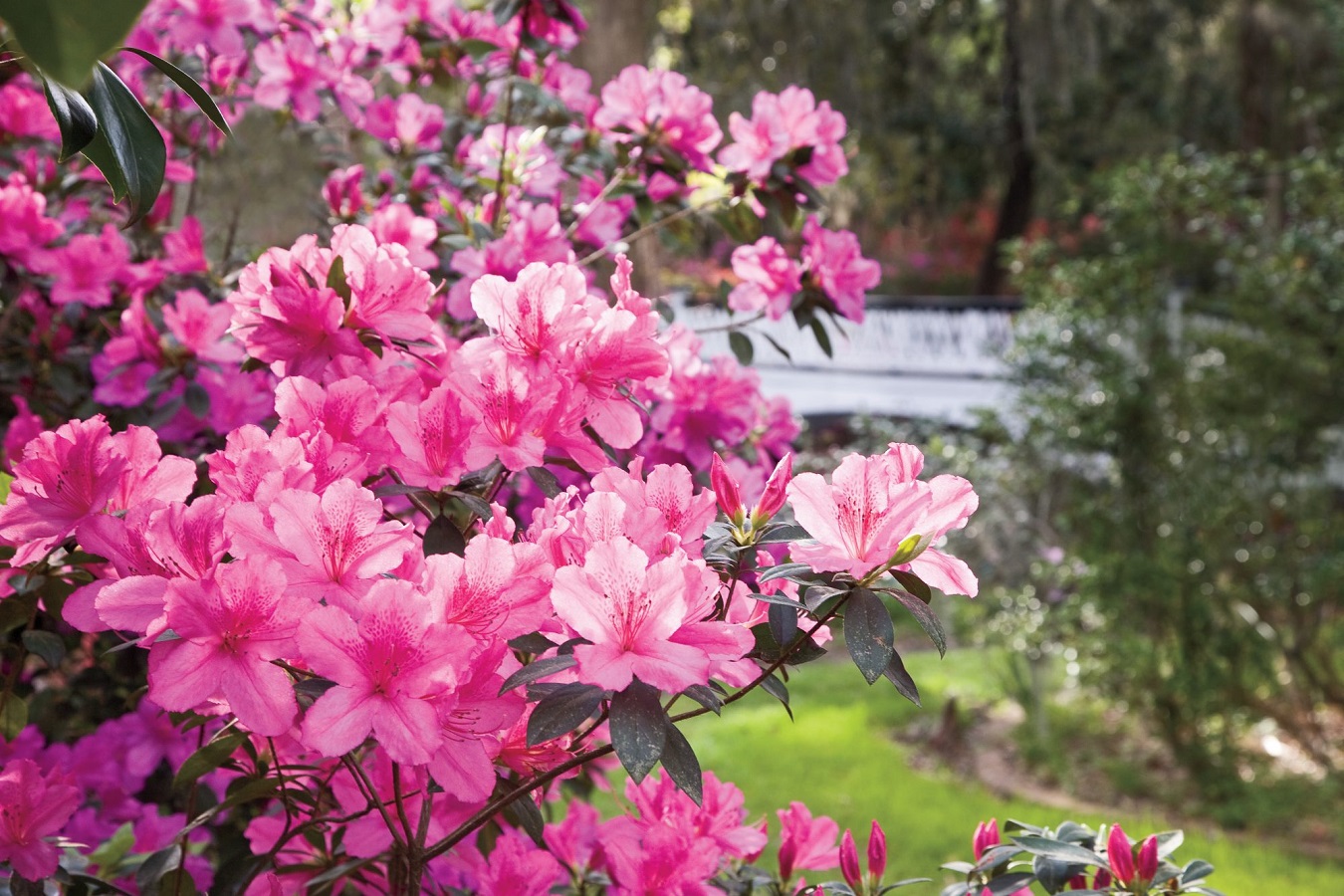
Azalea - what kind of plant is it and what does it look like?
Azalea is a plant belonging to the Rhododendron (Rhododendron) family, which derives from Ericaceae. Interestingly enough, it can be grown in containers (e.g. as a houseplant), as well as outdoors, as a shrub. The latter form is much more common.
Azalea flowers are famous for their beautiful appearance and an intense, calming fragrance. The plant’s leaves are quite noteworthy, too - they are covered with delicate hairs.
Azaleas come in many varieties. You can pick one according to where you are going to grow it. The most popular azalea types include multi-flower varieties, yellow azalea pontica and Japanese azalea.
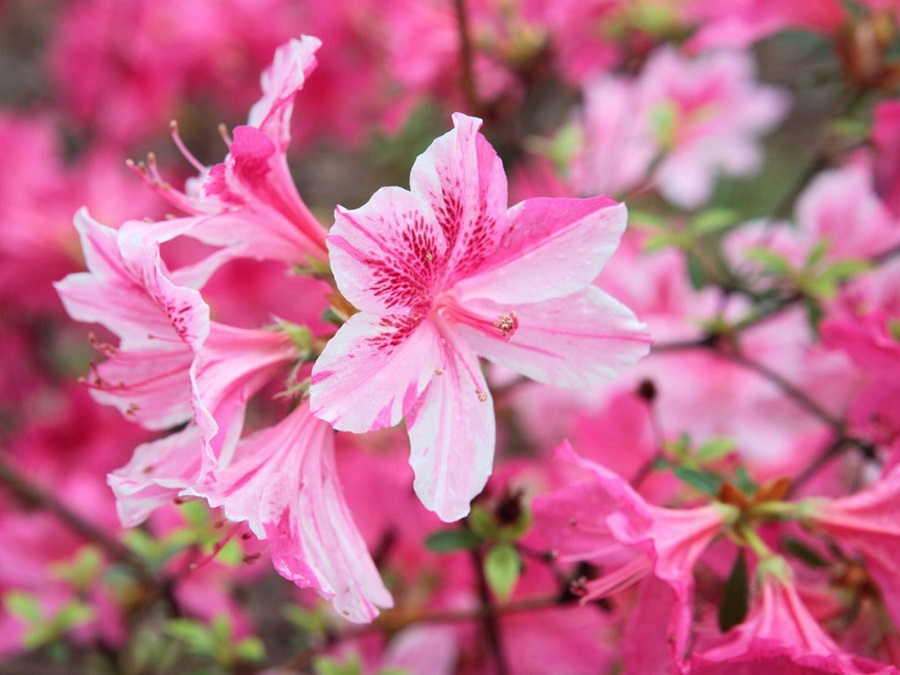
Azalea - types of the plant
Azaleas are highly popular thanks to their attractive appearance. It doesn’t mean, though, that each plant looks the same. Certain varieties differ between each other in:
- flowers and leaves sizes,
- height,
- resistance to low temperatures.
Japanese azaleas are the most popular group of plants. They don’t grow tall - 100 cm is the maximum height. During the blooming period, they develop many beautiful and nice-smelling flowers. The most popular types of Japanese azalea include:
- Ledikanense,
- Schneeperle,
- Geisha Orange,
- Kermesina Rose,
- Silver Queen,
- Hachmann’s Rokoko.
Azaleas developing multiple flowers on one stem are a common choice among gardeners. It’s a perfect type for large gardens, as this bush can grow even 2 meters tall. Interestingly enough, it’s resistant to high temperatures as well. This group includes types such as:
- Cannon’s Double,
- Feuerwerk,
- Irene Koster,
- Klondyke,
- Homebush,
- Golden Sunset,
- Persil.
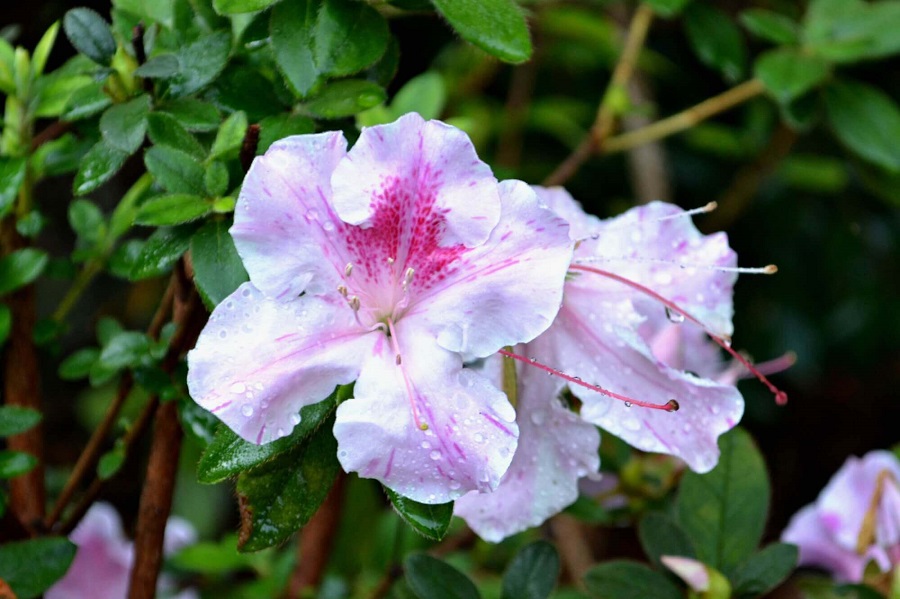
What is the best soil for azalea plants?
Although azaleas grow perfectly in various types of soil, we recommend providing the best possible conditions to the plant. This factor affects how long an azalea blooms, as well as the number of flowers it develops. The best soil for azaleas should be:
- permeable,
- slightly acidic (pH 4.5-5.5),
- moderately moist.
Azalea cannot tolerate too dry soils, but the ground shouldn’t be too moist either. However, if the soil doesn’t meet the above conditions, one can prepare it. Sandy grounds are more suitable after mixing some peat in it. Too dense soil should be acidified to make them looser.
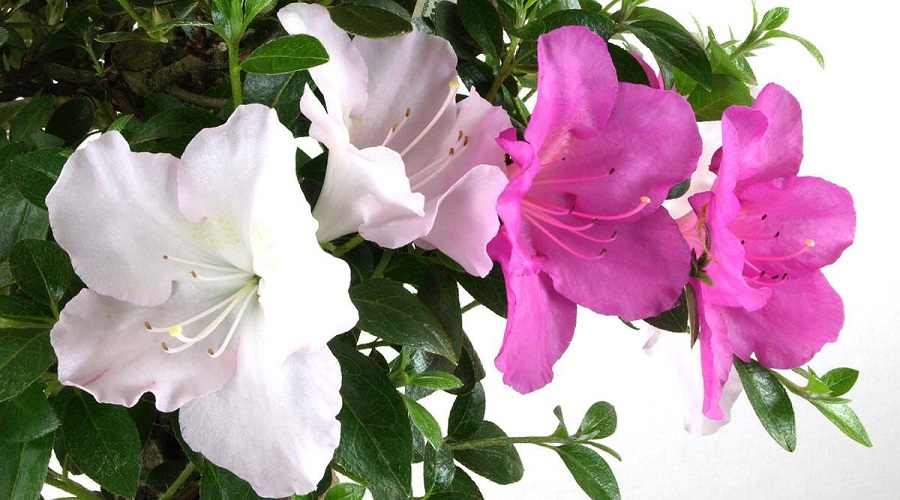
What is the best spot for an azalea bush?
Azalea grows best in semi-sunny spots. The plant needs sunlight to grow, but the rays cannot be too intense, as it might force earlier blooming when there’s still a risk of frost.
Protection from the wind is a highly important aspect of azalea care. Because the plant grows into a big bush, intense blows might damage its branches.
How often to water azaleas?
Azaleas need moderately wet soil. Don’t water it too frequently and too intensely - but make sure not to neglect watering, as it might cause the plant to wither and drop its leaves.
An azalea bush might need watering every day during summer, but in smaller quantities. Also, remember to mist the entire plant if temperatures get really high. Do it either early in the morning or late in the evening to avoid direct sunlight.
Azaleas grown in containers indoors have different requirements. In this case, watering is less frequent - every few days or according to the observed needs of the plant.
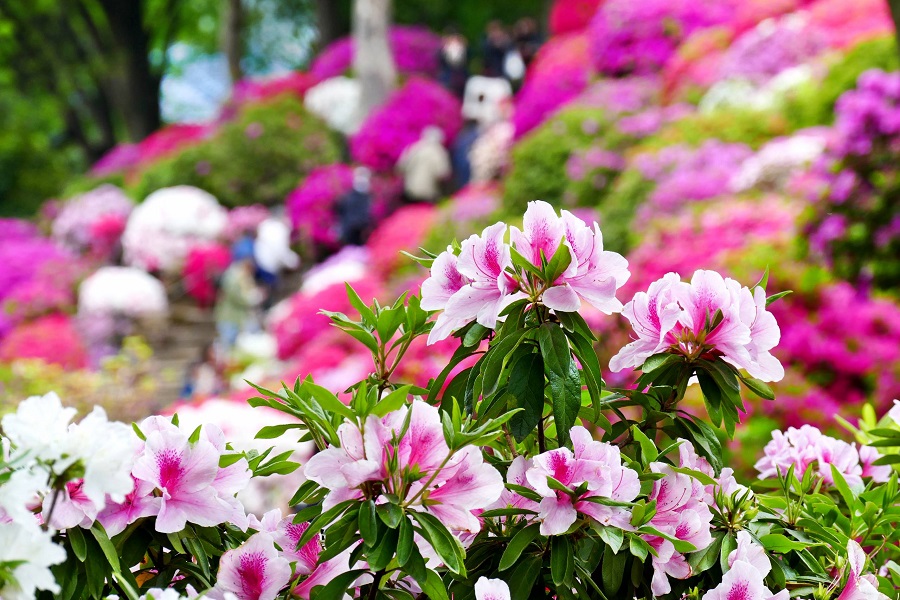
Azalea fertilizer - when to fertilize azaleas?
Azaleas need regular feeding. Thanks to this, you can make sure they receive all the necessary nutrients needed for a beautiful growth and blooming. But pay attention to the products you use. They shouldn’t contain calcium oxide, as azalea bush requires acidic soil. Any fertilizer designed for Ericaceae group of plants is suitable.
As for when to fertilize azaleas - it depends mostly on the product you pick. Liquid fertilizers require different dosing from sticks or powdery products. In this case, make sure to consult the information provided by the manufacturer or ask an expert in the gardening store you’re buying the fertilizer at.
When to plant an azalea bush?
Azalea bushes can be planted from spring until fall without any issues. But don’t do it without prior preparation. The plant needs to get hardened off. It’s done by submerging the pot with the plant in rainwater. This way, the azalea “gets used to” the outdoor conditions.
When do azaleas bloom?
Azaleas flower between May and June. A lot depends on the weather conditions, as well as the care provided to the plant. Picking a wrong spot for an azalea might cause the plant to develop flower buds earlier or later. That’s why it’s important to pay attention to all the aspects of taking care of azaleas.
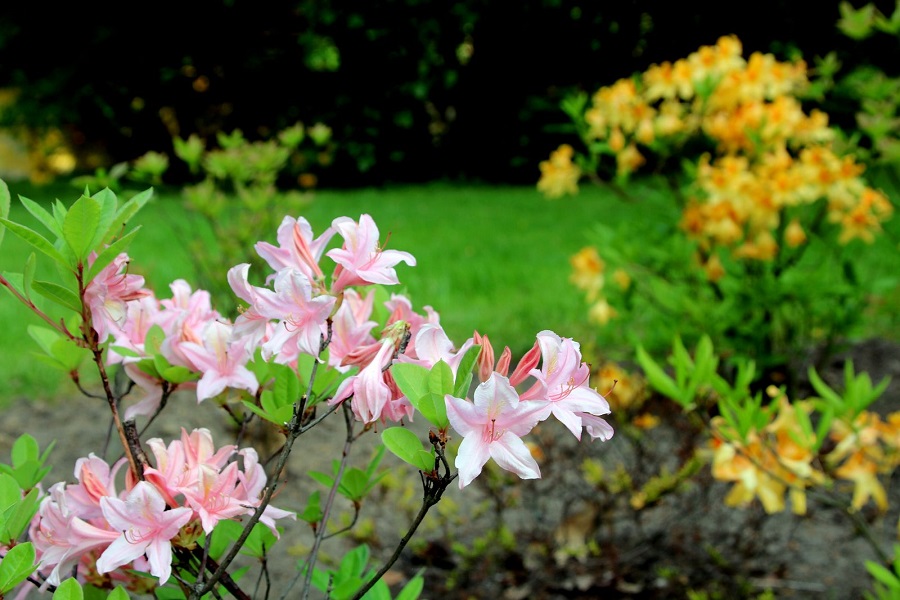
Japanese azalea - pruning
Azaleas require trimming - but it cannot be done randomly. Make sure to follow tips from experts who know best how to take care of such a plant. One should prune azaleas after they stop blooming. The stems growing out of the main branches of the shrub are shortened. Not all of them should be cut - only about 1/6 of the whole. This way, the shrub has a chance to develop more foliage on the sides.
Azalea diseases and pests
Azalea is quite resistant to pests. If detected early enough, aphids, spider mites, scales, springtails and even thrips can be eliminated in no time - using home remedies or chemicals.
Unfortunately, azaleas are prone to various diseases. Gray mold is the most dangerous one. It typically appears in early spring and can lead to hindering the growth of the plant. It’s important to protect the azalea from frequent temperature changes and leaves overheating. If mold appears, use the right antifungal product immediately.
Other dangers looming over azalea plants include:
- chlorosis,
- leaf blotch,
- withering stems,
- phytophthora,
- brown blotch.
Any of the mentioned problems needs taking a certain action to eliminate them. Sometimes, spraying the plant with natural solutions is enough. If they don’t work, store-bought chemicals might be necessary.
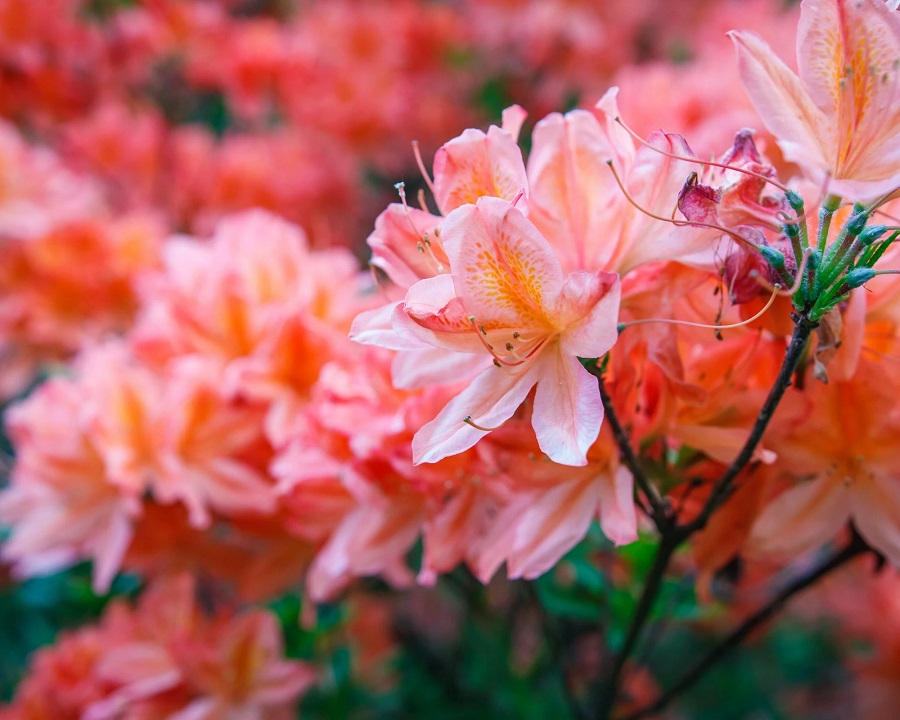
📍 What does an azalea look like?
Azalea is a shrub-like plant which can grow 1-2 meters tall, depending on the variety. It is characteristic for plentiful blooming. Azalea's leaves are distinct as well - thin, oval and hairy. Flowers resemble small cups, although the shape depends on the type of azalea.
📍 When does azalea bloom?
On average, azaleas bloom between May and June. Keep in mind that the spot where the plant grows and the weather conditions impact blooming. With intense sun exposition, an azalea can develop flower buds earlier. If growing in full shade, they might appear later than expected.
📍 When to plant Japanese azalea?
Japanese azaleas aren't difficult when it comes to their planting time. You can put them in the ground anytime between spring and fall. It's important to harden off the plant prior to planting. To do this, place the pot with the plant in rain water.
📍 How to water azaleas?
Azaleas don't tolerate overly dry or wet soil, so one should water them carefully. Watering depends on the weather - if it rains, watering might be unnecessary, while during a drought you might need to water the plant more frequently and mist its leaves.
Featured articles




